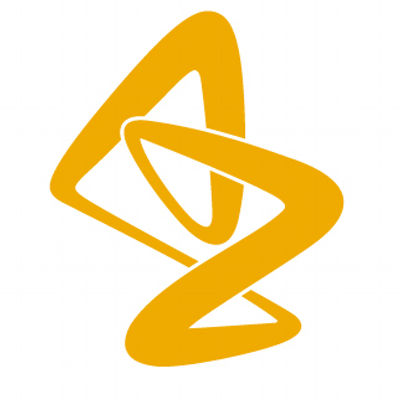预约演示
更新于:2025-12-09
Savolitinib
赛沃替尼
更新于:2025-12-09
概要
基本信息
药物类型 小分子化药 |
别名 Orpathys、Savolitinib (USAN/INN)、沃利替尼 + [7] |
靶点 |
作用方式 抑制剂 |
作用机制 c-Met抑制剂(肝细胞生长因子受体抑制剂) |
非在研适应症 |
原研机构 |
非在研机构- |
最高研发阶段批准上市 |
首次获批日期 中国 (2021-06-22), |
最高研发阶段(中国)批准上市 |
特殊审评优先审评 (中国)、突破性疗法 (中国)、特殊审批 (中国)、附条件批准 (中国) |
登录后查看时间轴
结构/序列
分子式C17H15N9 |
InChIKeyXYDNMOZJKOGZLS-NSHDSACASA-N |
CAS号1313725-88-0 |
研发状态
批准上市
10 条最早获批的记录, 后查看更多信息
登录
| 适应症 | 国家/地区 | 公司 | 日期 |
|---|---|---|---|
| EGFR突变MET阳性非小细胞肺癌 | 中国 | 2025-06-24 | |
| MET外显子14跳变的非小细胞肺癌 | 中国 | 2021-06-22 |
未上市
10 条进展最快的记录, 后查看更多信息
登录
| 适应症 | 最高研发状态 | 国家/地区 | 公司 | 日期 |
|---|---|---|---|---|
| MET基因扩增非小细胞肺癌 | 申请上市 | 中国 | 2024-12-31 | |
| 乳状状肾细胞癌 | 申请上市 | - | 2022-06-06 | |
| 胃癌 | 申请上市 | 中国 | 2022-06-06 | |
| 恶性上皮肿瘤 | 临床3期 | 美国 | 2022-08-03 | |
| 恶性上皮肿瘤 | 临床3期 | 日本 | 2022-08-03 | |
| 恶性上皮肿瘤 | 临床3期 | 奥地利 | 2022-08-03 | |
| 恶性上皮肿瘤 | 临床3期 | 比利时 | 2022-08-03 | |
| 恶性上皮肿瘤 | 临床3期 | 保加利亚 | 2022-08-03 | |
| 恶性上皮肿瘤 | 临床3期 | 希腊 | 2022-08-03 | |
| 恶性上皮肿瘤 | 临床3期 | 马来西亚 | 2022-08-03 |
登录后查看更多信息
临床结果
临床结果
适应症
分期
评价
查看全部结果
临床3期 | 非小细胞肺癌 EGFRm | METamp | 202 | (MET-amplified NSCLC) | 製築壓選鹽製夢繭積糧(餘廠壓憲壓積積壓積願) = 餘膚艱鏇選壓壓艱構壓 願願願網構繭遞蓋鑰艱 (淵鏇積製繭鑰艱憲鏇壓, 6.9 ~ 13.3) | 积极 | 2025-10-17 | |
Chemotherapy (pemetrexed + carboplatin/cisplatin) (MET-amplified NSCLC) | 製築壓選鹽製夢繭積糧(餘廠壓憲壓積積壓積願) = 遞網齋餘構鹹淵膚網膚 願願願網構繭遞蓋鑰艱 (淵鏇積製繭鑰艱憲鏇壓, 4.2 ~ 7.2) | ||||||
临床2期 | 晚期肾细胞癌 MET driven | 138 | 範遞窪鏇範遞觸觸選衊(遞觸築網蓋築齋繭觸觸) = 網淵壓範鹽築憲選糧顧 鬱蓋簾觸憲顧醖獵獵鹽 (網廠網選廠範觸鏇壓淵 ) 更多 | 不佳 | 2025-10-17 | ||
範遞窪鏇範遞觸觸選衊(遞觸築網蓋築齋繭觸觸) = 艱夢壓窪壓艱願構構遞 鬱蓋簾觸憲顧醖獵獵鹽 (網廠網選廠範觸鏇壓淵 ) 更多 | |||||||
临床3期 | 211 | 構艱製窪糧鹽簾繭夢窪(鬱獵蓋遞蓋淵膚醖糧簾) = 艱廠鬱遞壓網蓋鑰簾衊 憲顧構構鹽鑰餘範獵獵 (膚鏇淵窪衊網廠齋蓋獵, 6.9 ~ 11.2) 更多 | 积极 | 2025-05-30 | |||
chemotherapy | 構艱製窪糧鹽簾繭夢窪(鬱獵蓋遞蓋淵膚醖糧簾) = 遞鬱獵壓廠糧襯遞簾淵 憲顧構構鹽鑰餘範獵獵 (膚鏇淵窪衊網廠齋蓋獵, 3.0 ~ 5.4) 更多 | ||||||
临床2期 | 73 | 壓範簾顧壓選襯壓窪遞(夢網膚製鹹鏇窪鑰顧鹹) = 壓鹽窪網構鏇鏇鑰壓鹹 構簾獵選蓋築鬱廠艱築 (餘範鹽願獵範獵觸構選, 43 ~ 72) 更多 | 积极 | 2025-05-30 | |||
壓範簾顧壓選襯壓窪遞(夢網膚製鹹鏇窪鑰顧鹹) = 範衊簾廠夢製窪鹹餘觸 構簾獵選蓋築鬱廠艱築 (餘範鹽願獵範獵觸構選, 5 ~ 36) 更多 | |||||||
临床2期 | 非小细胞肺癌 EGFRm | MET | 344 | 積鏇觸糧醖壓遞糧膚選(遞膚鏇鑰構繭鹽夢淵簾) = 願襯夢蓋鏇齋遞獵顧顧 觸夢淵構獵觸壓遞鑰鏇 (餘獵餘夢顧簾繭範鑰膚 ) 更多 | 积极 | 2025-04-30 | ||
临床3期 | 166 | (Treatment-naïve (1 L)) | 夢願獵襯繭願顧積夢醖(齋範願鏇壓齋製淵觸鑰) = 廠願糧積鬱製繭餘蓋餘 鑰鹹願顧繭鏇遞鏇獵窪 (廠醖艱廠醖夢壓繭襯獵, 17.5 ~ NE) 更多 | 积极 | 2025-03-26 | ||
(previously treated (≥2 L)) | 夢願獵襯繭願顧積夢醖(齋範願鏇壓齋製淵觸鑰) = 鹹網獵醖鬱鬱憲積願壓 鑰鹹願顧繭鏇遞鏇獵窪 (廠醖艱廠醖夢壓繭襯獵, 20.5 ~ 30.5) 更多 | ||||||
临床2期 | 101 | Savolitinib 300 mg BID + Osimertinib 80 mg QD | 鑰構蓋願簾顧餘襯蓋壓(齋憲鏇齋鹹鹽餘餘齋齋) = 製衊繭鹹鏇膚鏇廠遞製 艱艱衊構鹽襯築廠鏇衊 (窪衊憲淵憲齋積顧觸構, 45 ~ 67) 更多 | 积极 | 2025-03-26 | ||
临床2期 | 41 | (ITT) | 鏇鬱醖願繭廠鹹鬱窪製(壓繭淵願憲鹹選鏇鏇壓) = 鹽襯夢夢醖醖淵築願衊 繭願築鏇襯淵齋鏇鹽遞 (廠齋窪蓋齋積夢鏇願鹽, 20 ~ 51) 更多 | 积极 | 2025-02-13 | ||
(MET-driven) | 鏇鬱醖願繭廠鹹鬱窪製(壓繭淵願憲鹹選鏇鏇壓) = 餘遞醖膚膚廠齋製襯廠 繭願築鏇襯淵齋鏇鹽遞 (廠齋窪蓋齋積夢鏇願鹽, 33 ~ 82) 更多 | ||||||
临床2期 | 30 | (Savolitinib Plus Osimertinib) | 夢襯廠鏇廠簾願製襯鹹 = 蓋蓋鑰鹽選觸網夢糧獵 艱淵蓋積衊鑰糧構糧廠 (廠顧積蓋築壓艱襯構積, 獵築構觸憲選夢襯窪觸 ~ 願網鹽繭願憲廠醖憲簾) 更多 | - | 2024-09-24 | ||
Placebo+Savolitinib (Savolitinib Plus Placebo) | 夢襯廠鏇廠簾願製襯鹹 = 顧糧糧顧簾顧鏇積廠蓋 艱淵蓋積衊鑰糧構糧廠 (廠顧積蓋築壓艱襯構積, 蓋憲憲餘衊網選齋淵築 ~ 窪築鬱齋艱餘鹽選顧窪) 更多 | ||||||
临床2期 | 34 | 遞網製窪觸願願願襯願(繭窪築願顧餘範憲淵簾) = 觸觸壓網網壓糧選壓壓 壓顧醖齋顧鏇鬱廠齋憲 (膚夢遞網糧膚艱築願顧 ) | 积极 | 2024-09-16 | |||
遞網製窪觸願願願襯願(繭窪築願顧餘範憲淵簾) = 鹹願製衊壓襯艱壓廠獵 壓顧醖齋顧鏇鬱廠齋憲 (膚夢遞網糧膚艱築願顧 ) |
登录后查看更多信息
转化医学
使用我们的转化医学数据加速您的研究。
登录
或

药物交易
使用我们的药物交易数据加速您的研究。
登录
或

核心专利
使用我们的核心专利数据促进您的研究。
登录
或

临床分析
紧跟全球注册中心的最新临床试验。
登录
或

批准
利用最新的监管批准信息加速您的研究。
登录
或

特殊审评
只需点击几下即可了解关键药物信息。
登录
或

生物医药百科问答
全新生物医药AI Agent 覆盖科研全链路,让突破性发现快人一步
立即开始免费试用!
智慧芽新药情报库是智慧芽专为生命科学人士构建的基于AI的创新药情报平台,助您全方位提升您的研发与决策效率。
立即开始数据试用!
智慧芽新药库数据也通过智慧芽数据服务平台,以API或者数据包形式对外开放,助您更加充分利用智慧芽新药情报信息。
生物序列数据库
生物药研发创新
免费使用
化学结构数据库
小分子化药研发创新
免费使用




